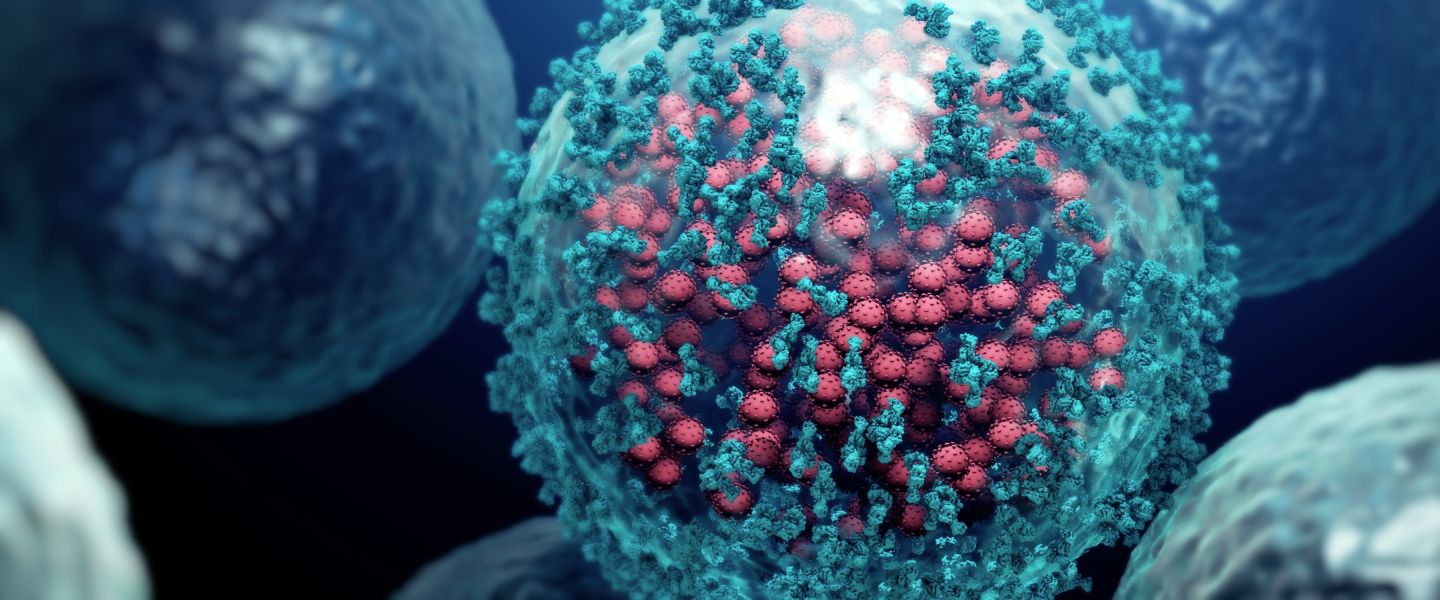SHARING / REPOSTING GUIDELINES: We're very happy to have posts/articles shared as direct links.
However, if you are replicating and re-posting information from this website or our posts, Abbey requests that you:
A) Only ever share articles in part (not in full). (eg. You can lift a paragraph as a way of introducing your readers to the topic) B) Be sure to always provide a direct link/URL back to the full original article here on the MyHealingCommunity.com website. Thanks in advance for your co-operation when sharing and re-posting any and all information that appears on this website.
The Growing Link Between Microplastics and Cancer
The first study I came across when writing this article found that heart disease patients with microplastics in their carotid arteries were twice as likely to suffer a heart attack or stroke compared to those without detectable microplastics. This is particularly concerning for cancer treatment survivors, who already have an elevated risk of cardiovascular events even years after treatment ends. A 2022 study found a 42% overall increase in cardiovascular disease risk and a 52% increase in heart failure risk among adult cancer treatment survivors.
Early lab studies have shown that microplastics can accumulate in cancer cells and may contribute to cancer spread:
- Smaller microplastics (less than 10 micrometres) could enter and accumulate in colorectal cancer cells.
- The microplastics persisted through cell division and were distributed to daughter cells.
- Cancer cells exposed to microplastics showed increased mobility, potentially promoting metastasis.
- Another study found higher microplastics in tumoral colon tissues in patients with colorectal adenocarcinoma than in healthy tissue.
Mechanisms of Harm
- They act as carriers for other environmental toxins, such as heavy metals and polycyclic aromatic hydrocarbons, allowing them to enter the body.
- They cause inflammation, oxidative stress, and gut microbiome disruption.
- Microplastics can interfere with our endocrine system and function, potentially leading to endocrine disorders that then potentially lead to what we know as cancer stem cell signalling traits.
Specific Xenoestrogens Found in Plastics
- Bisphenol A (BPA) and related chemicals: Found in polycarbonate plastics and epoxy resins.
- Phthalates: These are used as plasticisers in various plastic products.
- UV stabilisers, Such as benzophenones, are used in many plastic products.
- Flame retardants: Including polybrominated diphenyl ethers (PBDEs).
Some plastic components are considered carcinogenic, including:
Vinyl chloride: Used in the production of PVC.
Styrene: Used in the production of polystyrene.
Heavy Metals in Plastics
Specific heavy metals used as additives in plastics can also act as xenoestrogens or have other harmful effects:
- Antimony (Sb) and Aluminum (Al): Used in various plastics as flame retardants and stabilisers, they can act as metal-estrogens and are linked to breast cancer.
- Cadmium (Cd): Used in PVC as a stabiliser, it can disrupt calcium metabolism and promote carcinogenesis.
- Tin (Sn): Used in PU foam and PVC as a stabiliser, it can act as a metal-estrogen and is linked to various health issues.
Cancer Stem Cell Pathways and Microplastics
When toxic xenoestrogens and hormone-mimicking compounds in microplastics disrupt the endocrine system, they can contribute to the dysregulation of the embryonic cell signalling pathways, which we know as the cancer stem cell signalling pathways.
Cancer stem cells display significant dysregulation of embryonic cell signalling pathways. The main pathways affected include Wnt/ß-catenin, Notch, Hedgehog (Hh), JAK/STAT, PI3K/AKT/mTOR, NF-кB, and TGF-β/SMAD. While these pathways are typically tightly regulated in normal embryonic development and adult stem cell maintenance, their dysregulation contributes to crucial cancer stem cell properties, including enhanced self-renewal capacity, altered differentiation patterns, increased proliferation, improved survival mechanisms, and resistance to conventional therapies.
Microplastic Exposure Routes and Prevalence
- Humans are exposed to microplastics through ingestion (food, water) and inhalation.
- According to a study by the State University of New York at Fredonia, 94% of U.S. tap water samples were contaminated with microplastics.
- On average, tap water in the United States contained 4.8 microplastic fibres per 500 ml sample, highlighting the widespread presence of microplastics in the country's drinking water supply.
- Microplastics have been detected in human blood, placentas, and various organs.
- A study found detectable levels of polyethylene and polyvinyl chloride in carotid artery plaque in 58% and 12% of patients, respectively.
10 Ways to Reduce Microplastic Exposure
- Filter your drinking water using a high-quality filter (or reverse osmosis).
- Avoid heating food in plastic containers.
- Use glass, stainless steel, or ceramic containers for food storage and reheating.
- Reduce consumption of packaged foods and opt for fresh, unpackaged alternatives that you wash well and rinse with filtered water.
- Limit seafood consumption; significantly larger fish may accumulate more microplastics.
- Replace tea bags with loose-leaf tea and a teapot or filter cage.
- Avoid using plastic utensils and straws.
- Vacuum and dust regularly to reduce microplastic accumulation in household dust.
- Choose natural fibre clothing over synthetic materials to reduce microfiber shedding during washing.
- Do not use takeaway coffee cups lined with plastic; use your own plastic-free cup instead.
Download Abbey's “What I Can Do” to Reduce Microplastic Exposure. PDF to here. https://myhealingcommunity.com/wp-content/uploads/2024/10/10-Ways-to-Reduce-Microplastic-Exposure.pdf
Supporting Microplastic Detoxification
- Hydration: Drink plenty of filtered water to support kidney function and toxin elimination.
- Exercise: Engage in regular physical activity to promote sweating and support respiratory detoxification and lymphatic movement.
- Nutrition: Consume a diet rich in cruciferous vegetables, fibre-rich foods, and antioxidant-rich fruits and vegetables.
- Supplements: Consider broccoli sprout extract capsules, milk thistle, hydrogen-rich water, and curcumin.
- Sauna sessions: Regular sauna use can promote detoxification through sweating.
- Sleep: Prioritize quality sleep to support the body's natural detoxification processes.
- Reduce toxin intake: Avoid alcohol consumption, polluted air, and smoke.
- Support gut health: Consume probiotic-rich foods or supplements to maintain a healthy gut microbiome.
- Fasting or intermittent fasting: These practices may support cellular repair and detoxification processes safely under guidance.
- Dry brushing: This technique can stimulate the lymphatic system and remove toxins through the skin.
Download Abbey’s “Microplastic Detoxification What I Can Do” PDF here: https://myhealingcommunity.com/wp-content/uploads/2024/10/Microplastic-Detox-What-I-Can-Do.pdf
Remember, while these strategies can help reduce exposure and support natural detoxification processes, it's essential to consult with a healthcare professional before making significant changes to your diet or supplement regimen, especially if you have existing health conditions or are undergoing cancer treatment.
Extensive research has been conducted to identify and quantify endocrine disruptors in various packaging materials. Numerous scientific studies have detected chemicals such as BPA, phthalates, and PFAS in everyday consumer products, highlighting their widespread presence and potential for human exposure. Regulatory assessments by agencies like the U.S. Food and Drug Administration (FDA) and the European Chemicals Agency (ECHA) have evaluated the safety of these chemicals, leading to restrictions and bans in specific applications. Additionally, packaging manufacturers are increasingly testing products for endocrine-disrupting chemicals, although transparency varies across companies. Understanding which product packaging contains endocrine disruptors is crucial for reducing exposure and mitigating potential health risks.
Avoiding Endocrine Disruptors in Packaging
Several chemicals commonly found in packaging materials have been identified as endocrine disruptors:
Bisphenol A (BPA): Widely used in plastics and epoxy resins, BPA is prevalent in water bottles, food containers, and the lining of canned foods, especially those labelled with recycling codes 3 or 7. Look for BPA-free labelling on cans.
Phthalates: These are used to make plastics more flexible and are found in packaging for cosmetics, toys, and food. Check your plastic wraps and food storage bags.
Per and Polyfluoroalkyl Substances (PFAS): PFAS are used for their grease and water-resistant properties in fast food packaging, microwave popcorn bags, and pizza boxes.
Nonylphenol and Octylphenol: Both are used in plastics and detergents and are often found in reusable water bottles, spray bottles and plastic containers.
Tips for Identifying and Avoiding Endocrine Disruptors
Check Labels: Look for BPA-free, phthalate-free, or PFAS-free products was once acceptable. However, the latest sad news is that when companies remove BPA from their products, they often replace it with similar chemicals like BPS (Bisphenol S) or BPF (Bisphenol F). Unfortunately, these BPA alternatives have been found to have similar endocrine-disrupting properties to BPA.
A systematic review concluded that BPS and BPF are "as hormonally active as BPA."
Products labelled "BPA-free" can mislead consumers into thinking the product is safer, even when it's not. Many of these substitute chemicals have not been as thoroughly studied as BPA, which means their long-term effects still need to be fully understood.
This situation presents regulatory challenges, as current regulations often focus on specific chemicals like BPA, allowing manufacturers to switch to less-studied alternatives that may pose similar risks. In response, some experts and organizations are now calling for regulations on entire groups of similar chemicals (like bisphenols) rather than individual compounds.
To protect yourself, consider looking for products made from alternative materials like glass, stainless steel, or safer plastics. Be cautious of "BPA-free" labels and research the specific materials used. When possible, choose fresh, unpackaged foods to reduce exposure to food packaging chemicals.
Choose Alternative Materials: Opt for glass, stainless steel, or stainless containers instead of plastic.
Avoid Microwave Heating: Heating plastics can increase the release of endocrine disruptors.
Support Transparent Brands: Prefer companies that disclose their packaging materials and commitment to reducing harmful chemicals.
Stay Informed: Refer to resources from environmental and health organisations that regularly update lists of safer product alternatives, such as:
UK: Campaign for Safe Cosmetics https://campaignforsafecosmetics.org/
Identifying and avoiding endocrine disruptors in product packaging is a proactive step towards reducing potential health risks.
By being informed about common chemicals, understanding current research, and utilising available resources, we can make safer choices and advocate for healthier product standards.
FURTHER LEARNING
LISTENING AND READING
A must-read:
Plastics, Edcs & Health A Guide For Public Interest Organizations And Policy-Makers On Endocrine Disrupting Chemicals & Plastics:
View and or download it here.
A must-listen:
Dr. Rhonda Patrick, a renowned health expert and host of the FoundMyFitness podcast, recently released a mind-boggling episode titled "What Microplastics Are Doing to the Brain, Body, and Reproductive Systems". Rhonda delves deep into microplastics and their significant impact on human health in this comprehensive discussion. Rhonda emphasises the importance of understanding microplastic sources and their potential long-term health consequences. She provides actionable steps to minimise exposure and protect our health from these ubiquitous particles. This episode is a must-listen. Find it here on iTunes and here and explore the following FoundMyFitness podcast extra resources on this topic:
Episode show notes: https://www.foundmyfitness.com/episodes/microplastics
ONLINE COURSE MAKING THE LINK
After listening to Rhonda's podcast, I reflected on the information Dr. Binjemain shares in his new online course, "Understanding Cancer". As an integrative GP specialising in cancer, he's been speaking up about the link between microplastics and cancer for many years. The growing evidence is alarming.
The online course ‘UNDERSTANDING CANCER’ is here: www.understandingcancer.online
READING LIST
Here are some more research articles I’ve bookmarked and perhaps you would like to explore for yourself:
Embryonic Programs in Cancer and Metastasis—Insights From the Mammary Gland
https://www.frontiersin.org/journals/cell-and-developmental-biology/articles/10.3389/fcell.2022.938625/full
Signalling Pathways in Cancer and Embryonic Stem Cells
https://link.springer.com/article/10.1007/s12015-007-0004-8
The potential impacts of micro-and-nano plastics on various organ systems in humans
https://www.sciencedirect.com/science/article/pii/S235239642300467X
Microplastic exposure affects neural development of human pluripotent stem cell-derived cortical spheroids.
https://www.sciencedirect.com/science/article/abs/pii/S0304389422006732
Prenatal and postnatal exposure to polystyrene microplastics induces testis developmental disorder and affects male fertility in mice.
https://www.sciencedirect.com/science/article/pii/S030438942202338X
The potential impacts of micro-and-nano plastics on various organ systems in humans
https://www.thelancet.com/journals/ebiom/article/PIIS2352-3964(23)00467-X/fulltext
Regulation and signalling pathways in cancer stem cells: implications for targeted therapy for cancer
https://molecular-cancer.biomedcentral.com/articles/10.1186/s12943-023-01877-w
Xenoestrogen
https://www.sciencedirect.com/topics/agricultural-and-biological-sciences/xenoestrogen
Most Plastic Products Release Estrogenic Chemicals: A Potential Health Problem That Can Be Solved
https://www.ncbi.nlm.nih.gov/pmc/articles/PMC3222987/
What Are Xenoestrogens and How You Can Avoid Them
https://www.rupahealth.com/post/what-are-xenoestrogens-and-how-you-can-avoid-them
Xenoestrogens: A Comprehensive Review of Their Occurrence, Fate and Behavior in the Environment
https://www.ncbi.nlm.nih.gov/pmc/articles/PMC8395949/
Plastics Pose Threat to Human Health
https://www.endocrine.org/news-and-advocacy/news-room/2020/plastics-pose-threat-to-human-health
Xenoestrogens: Mechanisms of Action and Some Detection Methods
https://www.ncbi.nlm.nih.gov/pmc/articles/PMC7068600/
Could Microplastics Be a Driver for Early Onset Colorectal Cancer? - PMC
https://www.ncbi.nlm.nih.gov/pmc/articles/PMC10340669/
Microplastics on Human Health: How much do they harm us? | United Nations Development Programme
https://www.undp.org/kosovo/blog/microplastics-human-health-how-much-do-they-harm-us
Health Effects of Microplastic Exposures: Current Issues and Perspectives in South Korea - PMC
https://www.ncbi.nlm.nih.gov/pmc/articles/PMC10151227/
Study links microplastics with human health problems – but there’s still a lot we don’t know
https://www.sciencedirect.com/science/article/pii/S0147651323011405
'Very concerning': Microplastics can accumulate in cancer cells and may help them spread study hints
Incident Cardiovascular Disease Among Adults With Cancer - PMC
DISCLAIMER: Any and all information in this post was gathered from published research in cell lines or animals, or from typical clinical use. It may not be complete, may not have not been verified in humans, and is NOT meant or given as medical advice, but only as a guide to further exploration.







